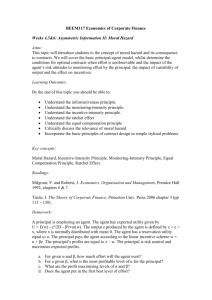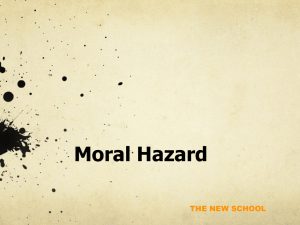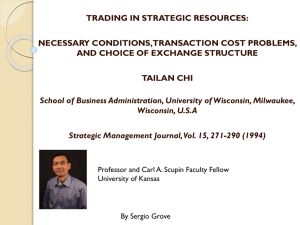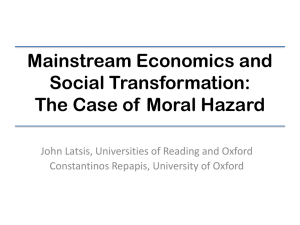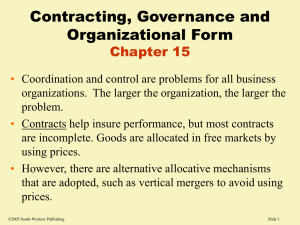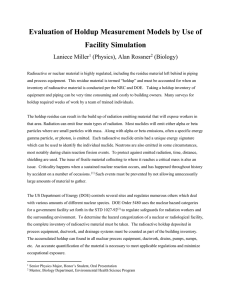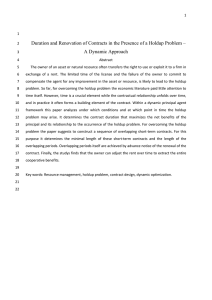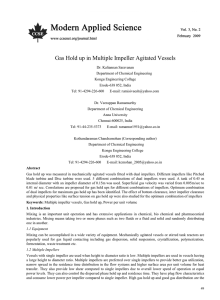投影片 1
advertisement
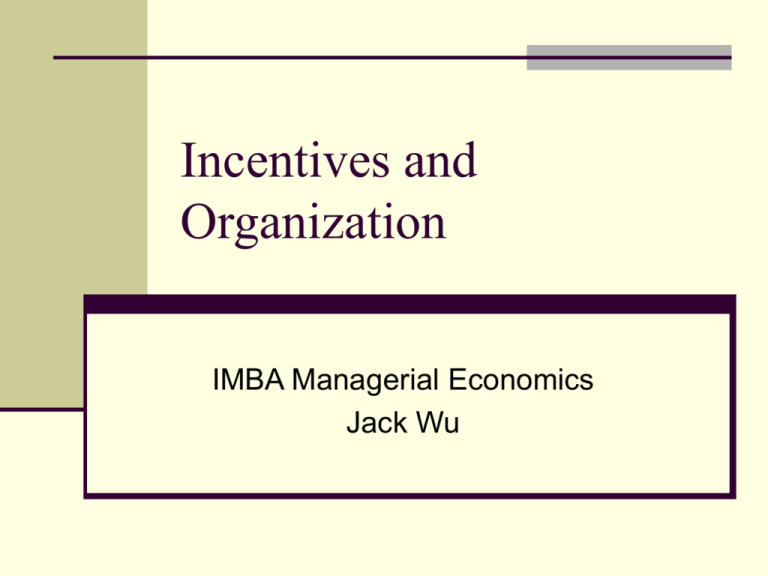
Incentives and Organization IMBA Managerial Economics Jack Wu Outline organizational architecture moral hazard ownership vertical integration Organizational Architecture distribution of ownership incentive schemes monitoring systems Moral Hazard asymmetric information about action conflict of interest Moral Hazard in Employment employer’s marginal benefit worker’s marginal benefit Quantity (units of effort) worker’s marginal cost efficient effort Happy Coincidence? Between 1970-82, U.S. fertility rate fell by 13.5% from 1.84 to 1.59 per hundred population proportion of deliveries by cesarean section rose by 240% Moral Hazard in Banking premium for deposit insurance is not experience-rated riskier the investment, the greater the expected benefit for the bank owners and the higher the expected loss for the Central Bank conflict of interest Central Bank cannot easily monitor actions of the bank Resolving Moral Hazard incentive scheme conditional payment quota monitoring system incentives must be based on observables Incentive vs Risk Efficient scheme balances benefits of more effort costs of risk bearing degree of risk risk aversion AT&T Incentive Scheme 1995: AT&T awarded CEO Robert E. Allen options for 108,000 shares at $43.94 exercise price 300 250 200 150 100 50 0 '95 AT&T '96 '97 '98 S&P Tel Index Relative Performance employment -- promote the best worker sports -- gold, silver, bronze examination – grade on a curve Multiple Responsibilities strong incentive more effort on that dimension less effort on other dimensions Non-Profit Organizations school’s objective maximize profit maximize education of students other examples – hospital, museum non-profit organization to tone down profit incentive Hong Kong: Traffic Wardens 20-30% of vehicles at expired meters did not get citations monitored traffic wardens issued 69-215% more citations proposal: assign each warden a daily quota of citations Holdup Holdup = opportunistic behavior = action intended to exploit another party’s dependence unlike moral hazard, holdup can arise even if information is symmetric Resolving Holdup avoid specific investments write more detailed contracts vertical integration (redistribute ownership) Complete Contract specifies actions and payments in every contingency degree to which a contract should be complete potential benefits and costs at stake extent of possible contingencies IMCO’s Saginaw Plant IMCO built new $22 million aluminium plant in Saginaw, MI – three miles from GM casting plant GM contracted to buy over $1 billion of aluminium from IMCO over 13 years Ownership Residual rights control -- rights that have not been contracted away income -- remaining after payment of all other claims Saigon Floating Hotel 1987: built in Singapore 1987-89: Great Barrier Reef, Australia 1989-96: Saigon River 1996: Vietnam Government refused to renew operating license Vertical Integration Combination of assets for two successive stages of production under a common ownership upstream: away from final consumer Dominion Resources acquired Consolidated Natural Gas, 1999 downstream: closer to final consumer Phillips Petroleum acquired Tosco, 2001 Vertical Integration: Impact Owner gets rights to residual control and residual income reduces potential for holdup Make or buy? vertical integration external contractor holdup moral hazard internal monopoly scale economies Airbus: Production annual “poker game”: consortium fixed transfer prices with partners partners received proportionate share of consortium profit • Where was partner’s incentive greater -for self or Airbus? Corporate Governance monitoring -- Board of Directors, major shareholders incentives -- stock options, bonuses, profitsharing ownership -- takeover
